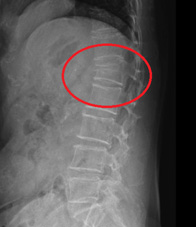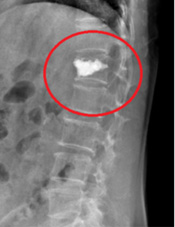
Taiwan is moving towards what the United
Nations refers to as a "super-aged society," and one of the major
prevalent diseases in such a society is osteoporosis. Osteoporosis is a
significant concern due to the severe consequences of related fractures, with
hip, spine, and wrist fractures being the most common. According to statistics,
there are approximately 60,000 cases of spine compression fractures caused by
osteoporosis in people aged 65 and above in Taiwan each year. These low-impact
fractures often occur due to minor slips or falls, but since the spine bears
the body's weight, they can result in severe back pain and limitations in daily
activities.
The majority of patients with these fractures
can be treated conservatively, which involves bed rest, pain medication, and
the use of back braces. The treatment duration typically takes around 12 weeks,
allowing the fractured spine to gradually heal to a stable strength. As the
fracture heals, back pain improves, and the time for mobilization increases.
However, conservative treatment has its
drawbacks. The height of the vertebral body may gradually collapse before the
fracture fully heals. Prolonged bed rest can also lead to serious complications
such as bedsores, pneumonia, and urinary tract infections. Some patients may
experience persistent lower back pain due to kyphosis (hunchback) resulting
from prolonged immobilization. In the most severe cases, surgery may be
required to decompress the nerves and stabilize the spine with the insertion of
bone screws. Although such severe situations are rare, they can lead to
irreversible disabilities, emphasizing the need for caution.
Percutaneous vertebroplasty is a procedure
where artificial bone cement is injected into the fractured vertebral body to
provide stability and prevent excessive collapse. It is a minimally invasive
surgery that can quickly relieve pain and accelerate the patient's recovery.
The procedure involves the following steps:
The patient receives local or general
anesthesia.
The surgeon uses a puncture needle to
access the collapsed vertebral body and slowly injects the flowable bone cement
through a guiding needle to fill the vertebral space.
The doctor monitors X-rays or other imaging
devices to ensure the bone cement is in the correct position and an adequate
amount is used.
Once the bone cement has hardened, the
surgeon closes the incision and performs sutures.
The surgery usually takes about 30 minutes,
requires local anesthesia at the injection site, has minimal blood loss, and
the incision is less than 1 cm. Most patients experience significant pain
relief after the surgery and can start moving within an hour. Patients
typically can be discharged the next day but still need to wear a back brace
for at least three months.
Percutaneous kyphoplasty, also known as
percutaneous vertebral augmentation, is a modified version of vertebroplasty.
The procedure is similar, but it involves the use of a balloon-tipped catheter
to restore the collapsed vertebral body before injecting the bone cement. This
technique allows for better correction of vertebral deformity and reduces the
risk of cement leakage, making the procedure safer. However, it is more
expensive, and the cost of the balloon device is not covered by insurance.
Both vertebroplasty and kyphoplasty are
minimally invasive, rapid, and highly safe treatment methods compared to
traditional spinal fixation with implants.
As with any surgical treatment, there are
risks and potential complications associated with vertebral augmentation
procedures. Some possible complications include cement leakage (3-5%), nerve
damage (<3%), and rare complications such as pulmonary embolism, myocardial
infarction, or stroke related to cement leakage. Pain exacerbation, bleeding,
and infection at the surgical site are also rare. Furthermore, adjacent segment
fractures may occur due to osteoporosis.
Bone cement, also known as polymethyl
methacrylate (PMMA), is the material used in these procedures. It is different
from industrial cement and is stored as a powder and liquid separately. When
needed, the powder and liquid are mixed rapidly for about 30 seconds, and after
a few minutes of chemical reaction, it forms a solid and pressure-resistant
cement mass.
In Taiwan, the National Health Insurance
covers bone cement for vertebral augmentation procedures. However, there are
specific reimbursement limitations and conditions, so it is recommended to
consult with a healthcare professional for detailed information.
Finally, regardless of the treatment method
for vertebral compression fractures, it is important for patients to receive
comprehensive care for osteoporosis. Lifestyle changes, fall prevention,
physical activity, sun exposure, calcium and vitamin D intake, and osteoporosis
medications are crucial for reducing the risk of future fractures.
In
conclusion, vertebroplasty and kyphoplasty have been developed for over 30
years, with significant advancements in materials and surgical instruments.
These procedures offer an alternative treatment option for patients with
compression fractures due to osteoporosis. The benefits include small surgical
incisions, fast recovery, short hospital stays, and a high success rate of
around 90%, making them effective and safe treatment methods recognized by
physicians.

A
vertebral body that collapses due to osteoporosis is referred to as a
compression
fracture

Fixing
fractures by filling the vertebral body with bone cement through percutaneous
vertebroplasty